On the Road is a weekday feature spotlighting reader photo submissions.
From the exotic to the familiar, whether you’re traveling or in your own backyard, we would love to see the world through your eyes.
We have a fun week coming up!
(click on the image below for a bigger, non-blurry version)
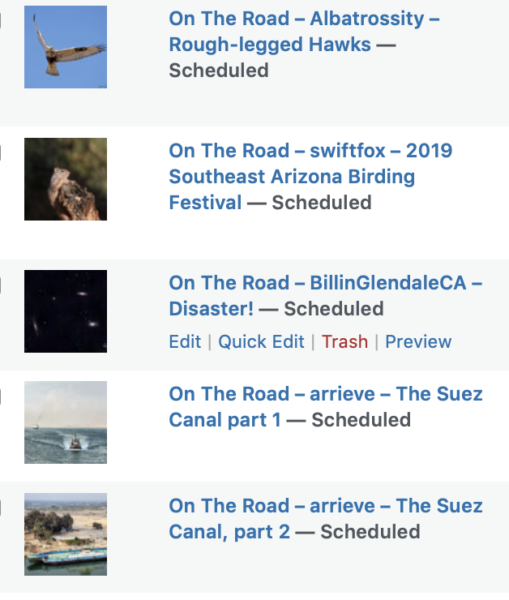
Albatrossity
Some of you know that I spend a lot of time photographing the many varieties of hawks that winter here in Flyover Country. Some might call it an obsession. Some might be correct. Nonetheless I find it to be both educational and therapeutic, so that‘s what I do. Most of the hawks I photograph are Red-tailed Hawks (Buteo jamaicensis), but I often will photograph Rough-legged Hawks (Buteo lagopus), as well as the several species of falcons that also spend the winter here. Rough-legged Hawks are the subject of today’s story.
This species is found across the Palearctic (for our European and UK readers, you know it as the Rough-legged Buzzard). It is a bird of open country with a breeding range in the tundra and taiga of the Far North, and a wintering range in open plains or steppes. It seems to choose both winter and summer territories on the basis of food availability, and is therefore more nomadic than most Red-tailed Hawks, who stick with a nesting and wintering territory through thick and thin most of the time. But because it spends most of its year in places with very few human inhabitants (Kansas included), there are a lot of things about the life history and migratory behavior that are a bit mysterious.
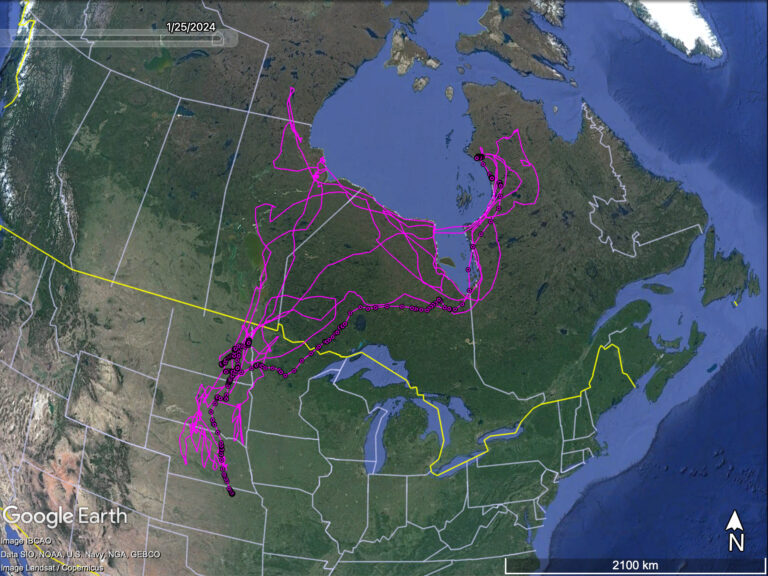
That has started to change. Ten years ago some raptor researchers started the Rough-legged Hawk Project, dedicated to capturing Rough-legged Hawks and outfitting them with transmitters which allow them to be tracked (via satellite or cell phone towers) all year long. To date they have put transmitters on 180 individual hawks in 18 states, 2 Canadian provinces, and one territory. One of those was this guy, a young male captured in Jan 2021 in Lyman County SD. Here are the tracking data for him since he was banded (this map, and all the maps below, are courtesy of Neil Paprocki and the Rough-legged Hawk Project). The linear tracks are his travels in previous years, and the circular points are the fall and winter of 2023. Note that he started from the eastern shore of Hudson Bay this fall, and that he had been spending a lot of time in the Dakotas and Nebraska. Click here for larger image.
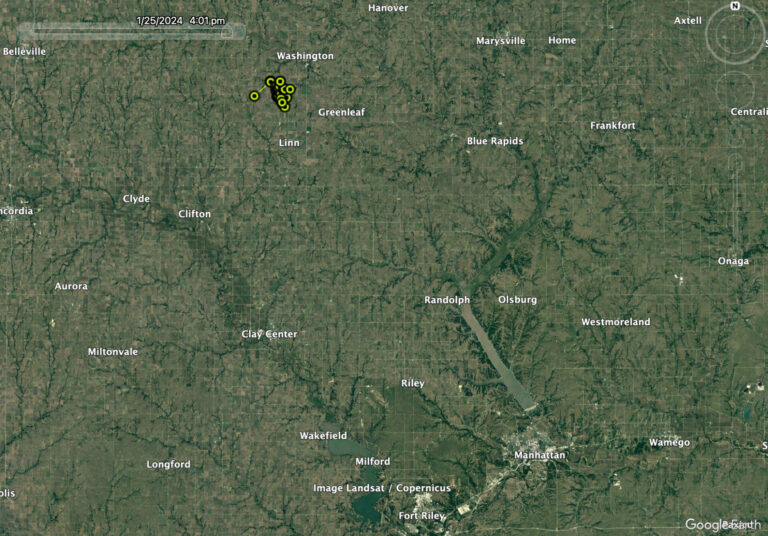
I got a message from Neil, one of the leaders of the Rough-legged Hawk project, that this bird had moved from North Dakota to Kansas when the polar vortex herniated and blasted the Great Plains with Arctic air, snow, and wind. You can see that movement in the previous map, but this map shows that the bird was now about 50 mi northwest of my location (Manhattan KS). Neil wanted to know if I could perhaps try to get some pictures of the bird, because he would have molted into adult plumage since he was captured as a youth, and they wanted to see what he looked like now. He was as far south as he had ever been, and closer to me, an obsessed photographer that Neil was in contact with. Naturally, I said yes! Click here for larger image.
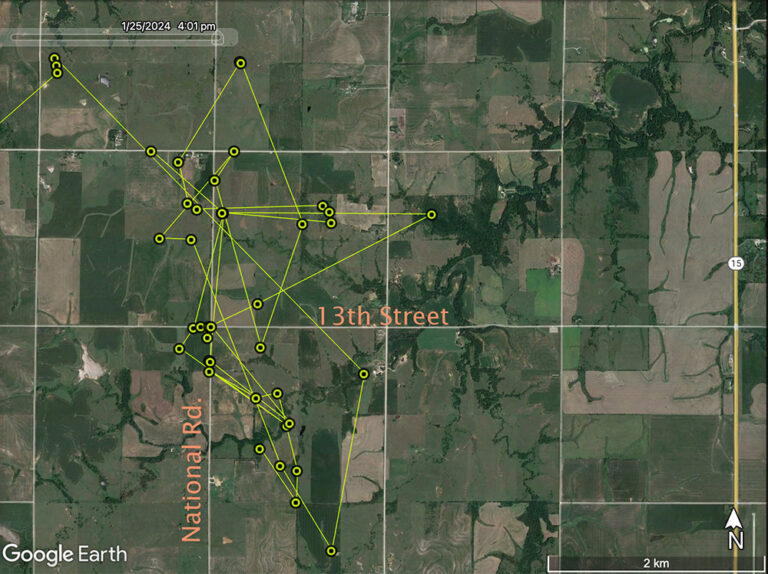
Here is a map showing his location history in the days just prior to Friday, Jan 25. It appeared that he was spending a lot of time around the intersection of two gravel roads (National Rd and 13th St), and it might be possible to sight him and photograph him in that area. But there was a problem with that scheme. As I wrote to Neil: “I suspect that those gravel roads are seriously challenging right now; that area got snow and rain that added up to 3+ inches of precipitation recently, and we have just now (yesterday) started to thaw. Click here for larger image.
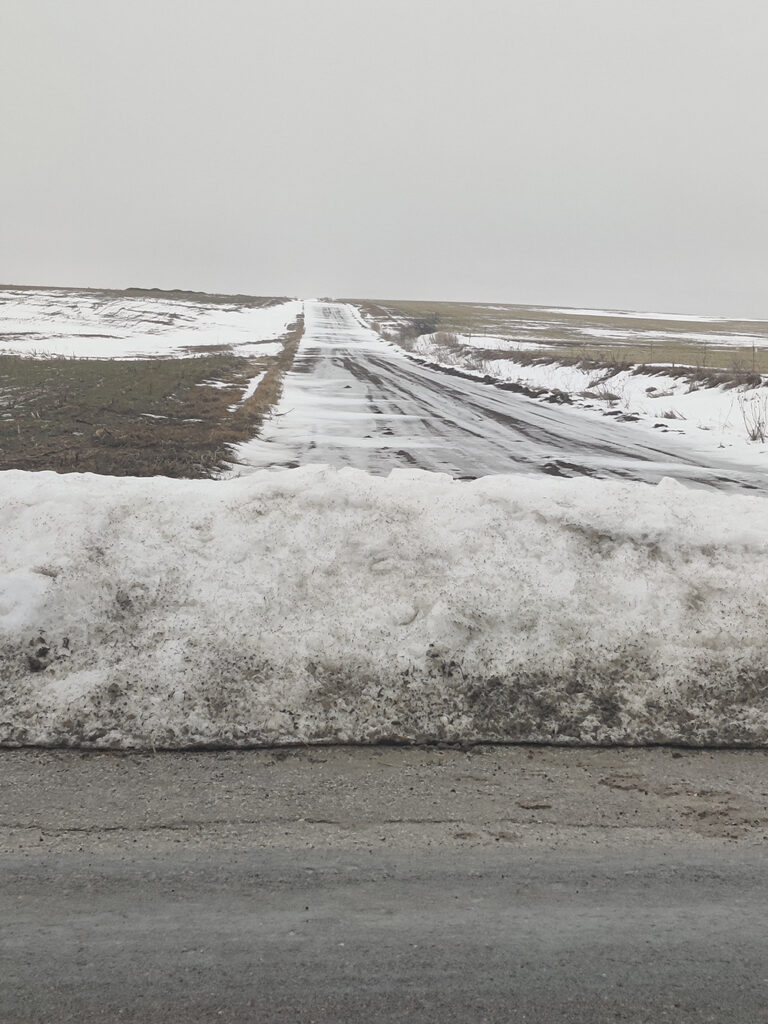
Nevertheless, I recruited Elizabeth and we headed out. I had a free morning, and Elizabeth needed a short road trip, because she was recovering from a mild concussion (slipping and falling on ice…) and needed to avoid reading, thinking, or looking at a screen (all of which are daunting assignments for an academic). So I thought we would head up there and evaluate the situation on the ground, in order to get a more informed idea about when those roads might be compatible with travel in my vehicle. Long story short – they got significantly more snow in that immediate area than we did here in Manhattan. It was beautiful, but treacherous. National Road north from 10th (K148) was not even accessible; the snowplowing had left a moraine blocking access from that direction. Click here for larger image.
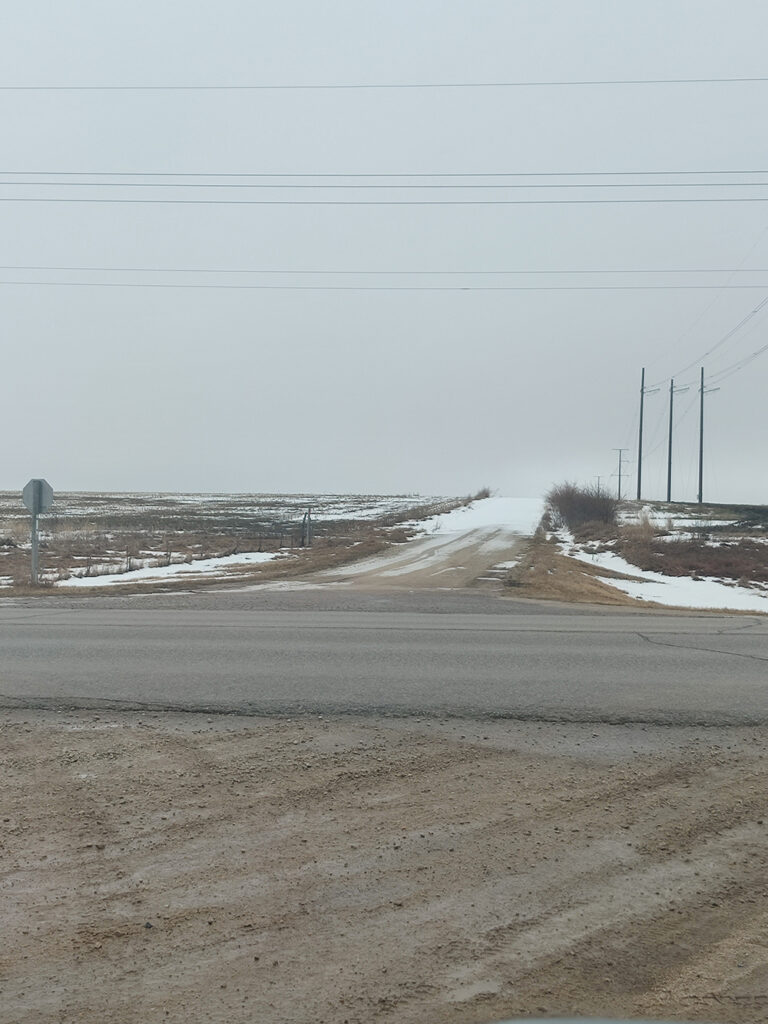
And 13th west from K15 was sloppy and muddy for the initial stretch; east of K15 it had not even been plowed yet. I did not need three+ miles of that, or the prospect of digging out (accompanied by a person recovering from a concussion!). So we turned around and came back, hoping that the bird would stay long enough to allow the roads to become less daunting. Click here for larger image.
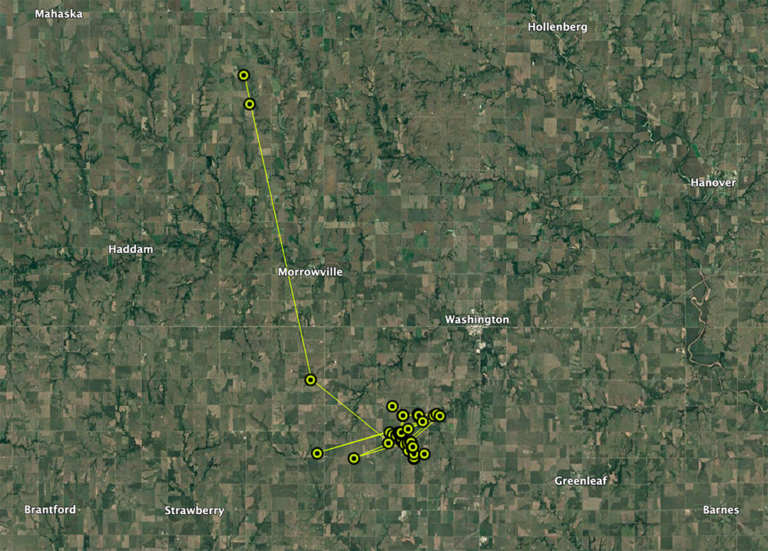
Unfortunately, the bird headed north on the afternoon of Sunday Jan 27. The most recent update from Neil indicates that he stopped in Nebraska, about 20 miles north of his previous location in Kansas. There is still some snow cover there, so I probably am not gonna chase him again. Click here for larger image.
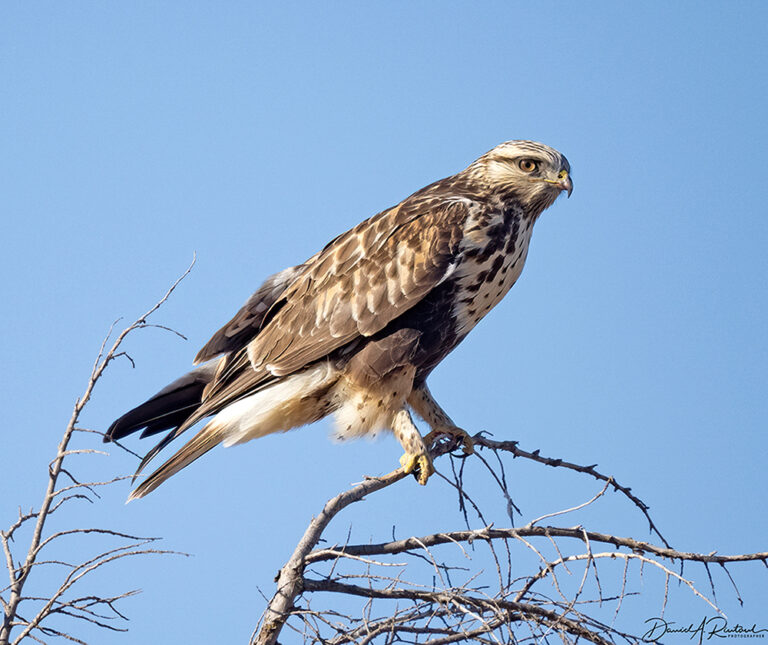
Yes, so far there are no bird pictures in this post! We can remedy that with a few, showing off the many plumages of this beautiful raptor. First up is a shot of a young light-morph bird in the fall of the year that it had hatched. The best hallmark of this plumage is a pale iris, which becomes dark brown as the bird ages into adulthood. This photo also shows an interesting behavior; these birds often perch at the tippy-top of trees, on tiny skinny branches. Click here for larger image.
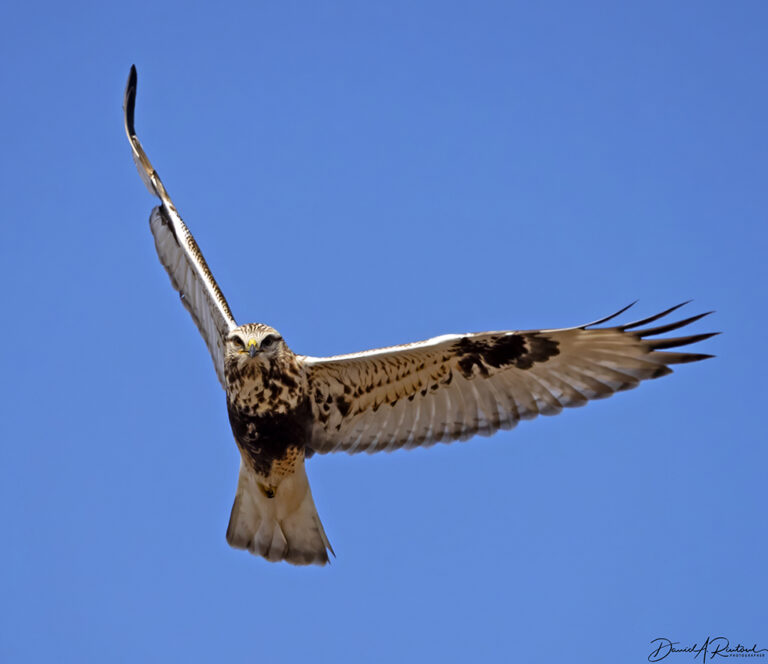
Rough-legged Hawks have dark and light morphs, but, unlike Red-tailed Hawks, the sexes had different adult plumages. This is a light-morph adult female, with a darker eye and a deep dark bellyband. The tail has a dark trailing edge, and there is a dark “carpal patch” at the bend of the wing. Click here for larger image.
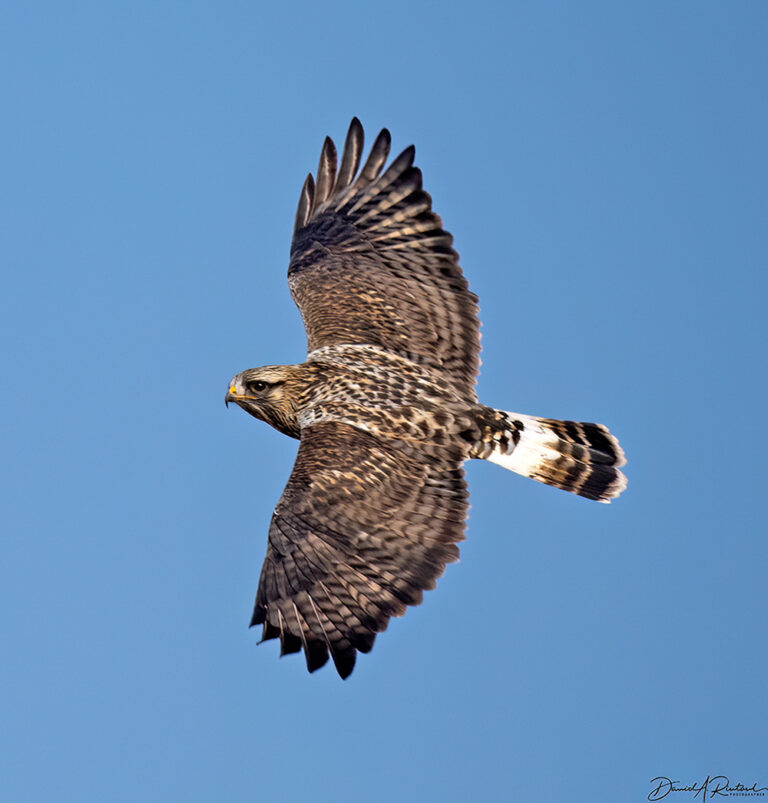
This is a light-morph male, showing off the white patch at the base of the tail, and multiple bands in the tail. Click here for larger image.
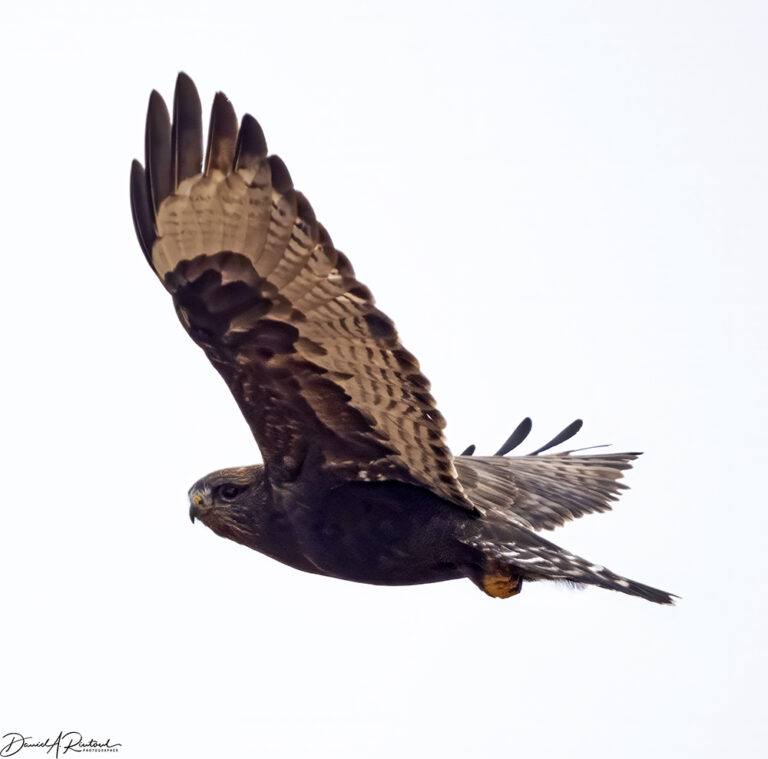
Finally, here is a dark-morph male. Since the underwing coverts are dark, it’s harder to see that carpal patch, but you can see one of the other characteristics of this species, the feathering (the “rough leggings”) that extends all the way down to the base of the toes, which is not seen in Red-tailed Hawks. Click here for larger image.
(Thanks to Neil and Elizabeth for reading drafts of this post and making helpful suggestions!)

Scuffletuffle
What a great life you live, filled with beautiful birds!
Donatellonerd
too bad you didn’t find him, but at least Elizabeth got a road trip when she was supposed to avoid everything else. Where am I supposed to find the legs (or toes) on that last picture, please?
SteveinPHX
I’ll have to study this a little. Work beckons.
Looks like they travel a lot. Thank you!
Albatrossity
@Donatellonerd: It is hard to see, so I generated a comparison shot with images of Red-tailed Hawk and Rough-legged Hawk feet. The tarsus (straight part of the foot that ends with the toes) is bare and scaly in redtails and feathered in roughlegs. This comparison also shows another characteristic that is useful in IDing these two species – the feet of a Rough-legged Hawk are petite and tiny compared to those of a Red-tailed Hawk,
Kristine
I see a lot of rough-legged hawks here in NE Illinois. They perch atop utility poles along the tollway and other main roads and scavenge roadkill and so are at more risk of getting hit by vehicles than other raptors. I have seen a few that had been struck.
Thanks for all this info about them as well as the photos. Any plans to try and track the young male again?
OzarkHillbilly
@Donatellonerd: Never mind, A got here 1st.
OzarkHillbilly
I love your posts A, I always learn something from them.
Donatellonerd
@Albatrossity: Thanks. so in the original picture, that little yellow circle that looks like a face wearing sunglasses, sort of under the wing , is the foot. and the fact that i can’t distinguish the leg from the bird’s body is how we know it’s rough-legged? (and thanks @Ozark Hillbilly for being second).
Albatrossity
@Donatellonerd: Yes, the yellow circle is the clenched toes, and there is no yellow leg appearing, just the toes
You can also see the feathered tarsus in the picture of the perched young bird (image #7 in the images above).
Albatrossity
@Kristine: Those are probably Red-tailed Hawks. Rough-legged Hawks are birds of open country, not often found along major roads or highly-inhabited places. And Rough-legged Hawks rarely scavenge roadkill, but that is a common behavior for Red-tailed Hawks.
And I have no plans to go look for that bird again unless he gets closer to me again AND the roads/weather cooperate better!
Rob
Thank you, Albatrossity, for this post. The photos are lovely. Rough-legs winter in Maryland in small numbers, but normally not in my part of Maryland. It has been a few years since I’ve seen any.
stinger
What a suspenseful, informative, entertaining story! The disappointment at the end is made up for by the photos that follow.
I especially love the picotee tail feathers on the light-morph male (I like picotee on roses and tulips, too) and the underwing feathers on the dark-morph and the way he is looking at you!
RAM
Some years ago, a rough-legged hawk, apparently either lost or just passing through northern Illinois, staked our bird feeders out for a couple weeks. They are amazingly fast and agile hunters, and look really big!
Kristine
@Albatrossity: I’ll look more closely the next time I see a hawk perched atop a utility pole (got my info from the Illinois Raptor Center site and a few other places, and we are in their migration path).
Albatrossity
@Kristine: Yes, they can be found in your part of the country in the winter, for sure. But sadly the range maps don’t show habitat preferences and behaviors, and those are often important clues for an ID.
bluefoot
Wow, awesome post. That tracking data is amazing. It’s one thing to know how far hawks can travel, it’s another thing to see it on a map for an individual. Thanks for this, and the photos. I love raptors of all sorts.
mvr
This is interesting (as always).
Thanks!
Yutsano
Tracking raptors even with the technology we have is tough. Add in the bird’s natural habitat and it turns into a big game of chase. But it does sound fun to go hawk hunting! Hopefully he does come back around in your area soon.
stinger
I meant to say also how much I appreciate the range and location images. and the side-by-side photos. So good.
StringOnAStick
Very cool to see the tracking data!
We did a sunny day drive along Klamath lake a few days ago, many reports including bald eagles. 3 were perched on series in the same pose on 3 short, abandoned telephone poles.